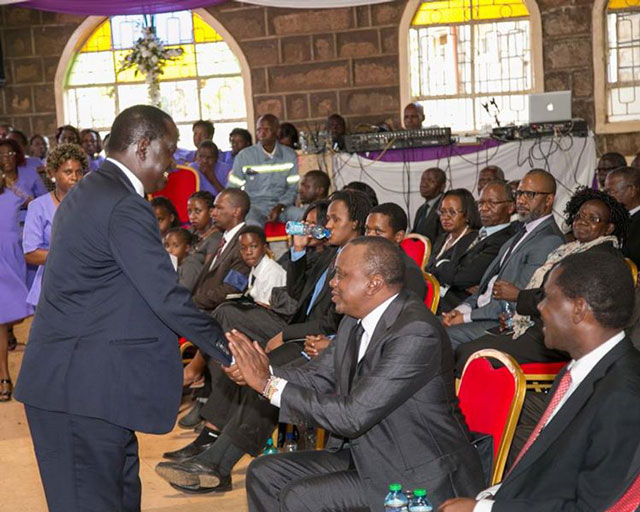
Birmingham, UK | NIC CHEESEMAN | Unrigging Kenyan election
The race for State House in Kenya is heating up. After a long period during which President Uhuru Kenyatta looked a shoo-in for re-election, the presidential race is looking increasingly competitive.
Although the most reliable polls still give the incumbent a strong lead of around 6% the main opposition candidate, Raila Odinga, has the greater momentum. Following a year in which his poll ratings hovered between 20% and 30%, Odinga has been buoyed by the confirmation that he will be the flag bearer of the main opposition coalition, the National Super Alliance (NASA). Other prominent alliance leaders have also said they will back his candidacy.
The closer the race becomes, the more Kenyans and those who care about the country will start to worry about election rigging. Both candidates have committed themselves to free and fair polls, but many Kenyans still fear that the process may not be credible.
In large part, this scepticism is a legacy of the events of 2007/8, when flawed polls led to post-election violence that took the lives of over 1,000 people and displaced hundreds of thousands more. Although the 2013 polls were much more peaceful, the process also suffered from a number of shortcomings which led the opposition to reject the official results.
Without prejudging whether the 2017 contest will be clean or not, it’s therefore important to ask how the election might be rigged, and how this could be stopped.
Here are four ways that elections could be rigged.
- Bring down the technology
In the 2013 elections, the technology used to safeguard the process failed systematically. The Independent Electoral and Boundaries Commission fell back on manual processes. This meant there was no fingerprint verification to ascertain that the right people were voting, and were only voting once. The breakdown of the technology, and the potential for the manual process to be abused, was a central part of the opposition’s election petition.
Odinga and his colleagues campaigned to make the use of biometric technology compulsory in the run-up to this election. But resistance from the government means that the commission retains the right to fall back on a manual system if the technology breaks down.
This is worrying for two reasons. First, candidates who fear they are losing and know that manual processes are less well insulated from manipulation have an incentive to make the technology fail. Second, technological problems will be interpreted as a sign of rigging whether or not they are, undermining confidence in the process.
- Inflate turnout in North-Eastern
Electoral turnout in the north-eastern region of Kenya has traditionally been poor. This is because of low population density and the fact that the region has historically been politically and economically marginalised. Given this, the high official turnout of over 80% in 2013 surprised many. There were suspicions that the turnout may have been artificially inflated by adding ballot papers in the name of voters who did not actually go to the polls.
Ballot box stuffing in the north-eastern part is particularly viable, because it’s the most remote part of the country. It is also an area prone to terrorist attacks. As a result, it is a place that international election monitors tend not to visit, which opens to the door to electoral abuse.
 The Independent Uganda: You get the Truth we Pay the Price
The Independent Uganda: You get the Truth we Pay the Price



Olá você tem idéia de como gerar dinheiro unindo o que você trata aqui , com
a medicina ? Sei que a pergunta parece confusa , mas este é um plano que tenho há tempos
e depois de ver sua página a cabeça ficou a mil https://Www.facebook.com/ubuntudicasetutoriais/